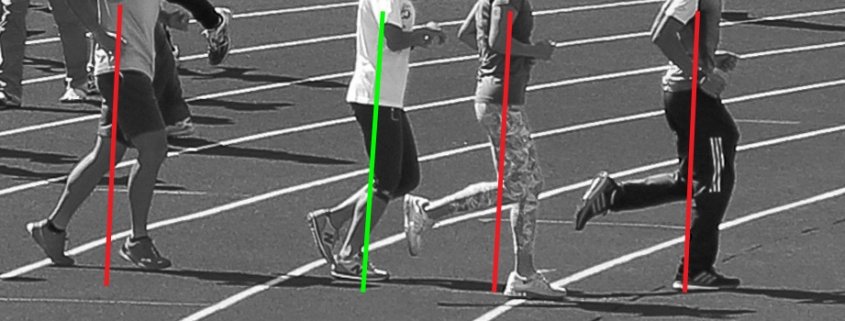Theory & Practice: What Is Overstriding in Running?
Overstriding is a very simple thing, but it is still veiled in the cloud of confusion for one simple reason – it is impossible to identify and/or define something when you operate without a clear standard.
When you are told that you’re overdoing something (and that’s what overstriding essentially means) the question arises: how did you come to a conclusion that I’m overdoing something? I think I’m just doing it. What makes you say I’m OVERdoing it? Is my ‘doing’ different from your ‘doing’? Who is to say that my ‘doing’ isn’t better than yours? Maybe what I’m doing is IT and you’re underdoing whatever it is you’re doing.
This can go on indefinitely because in that conversation we operate with opinions which are usually far from a standard and while we are all entitled to our opinions and points of view, this physical world operates by and with a set of natural laws. These laws are a part of the foundation of the conceptual model that is known as the Pose Method. But first, let’s look at the word ‘overstriding’ itself.
The Term
Over / oh-ver/
- above, beyond, in excess
Stride/ straɪd/
- a long step or pace
- the space measured by such a step
- a striding gait
- an act of forward movement, completed when the legs have returned to their initial relative positions
overstride / oh-ver-strahyd /
- to surpass
- to tower over; dominate
- to stride or step over or across
The simple definition of the words that are used to create this term makes it clear as to what the word means and why it was chosen. Or does it? What does the action of overstriding mean and in relation to what is it considered to be an action of excess? We need a standard to compare this action to in order to get those answers.
What is Overstriding
The Pose Method® provides us with a clear standard for running and makes identification of correct actions and errors, as well as providing definitions & terms a simpler and easier process.
When you’re told that you’re overstriding – you’re going over a point that is defined as a norm, a standard. The running stride exists between the points of support and is comprised of flight and support phases. The flight phases could be the most enjoyable part of running, but it is the support phases that provide one of the most significant contributions to movement. As we change support (as our feet land on the surface we run on) the quality of that interaction largely determines the quality of our running experience.
Through research and studies we’ve identified the best, the most efficient way to move from support to support. All a runner needs to do is maintain the running pose while falling forward. When the runner stays in the running pose he or she, by default, lands on the best part of their foot and in the most ideal position which is under their body, under their general center of mass.
This brings us to a very clear definition of overstriding – within the Pose Method of running framework, overstriding is defined as landing ahead of your body, ahead of your general center of mass.
How to Visually Identify Overstriding
At a first glance it might seem as an easy task, and it could be sometimes in the most gross cases of overstriding, which is very common among recreational runners. But once you move up the ranks of pro athletes, it takes a trained coach’s eye to spot it. However, for the sake of simplicity and to provide straightforward guidelines, let’s keep the parameters, by which overstriding can be easily identified, as basic as possible for this article.
- Look for the proper alignment. Look for the running pose and hip position over support. Your hips are your center, not your chest.
- Don’t look for the footstrike type: regardless of what part of your foot you land on – forefoot, the entire surface of your foot (often referred to as midfoot) or your heel – you can still land ahead of your body. That is why at our seminars we always emphasize that it’s a mistake to focus on how and where your foot strikes the ground. The footstrike is only the result of correct action taken prior to the footstrike occuring.
But don’t go crazy measuring the inches. While numbers could be fun, and math can provide solid support in science, out there in the field when you’re actually running, the only thing you ever have is your perception. Work on improving your perception by doing the recommended technique drills.
The importance of having a standard is unquestionable. Without a clearly defined standard in running technique there is no overstriding, there is no explanation for or ways to prevent overstriding and all we can do is wonder. Having a standard in running technique allows runners to correct their technical errors, improve their technique and actually attain measurable progress.

 Pose Method Publishing, Inc
Pose Method Publishing, Inc


Leave a Reply
Want to join the discussion?Feel free to contribute!